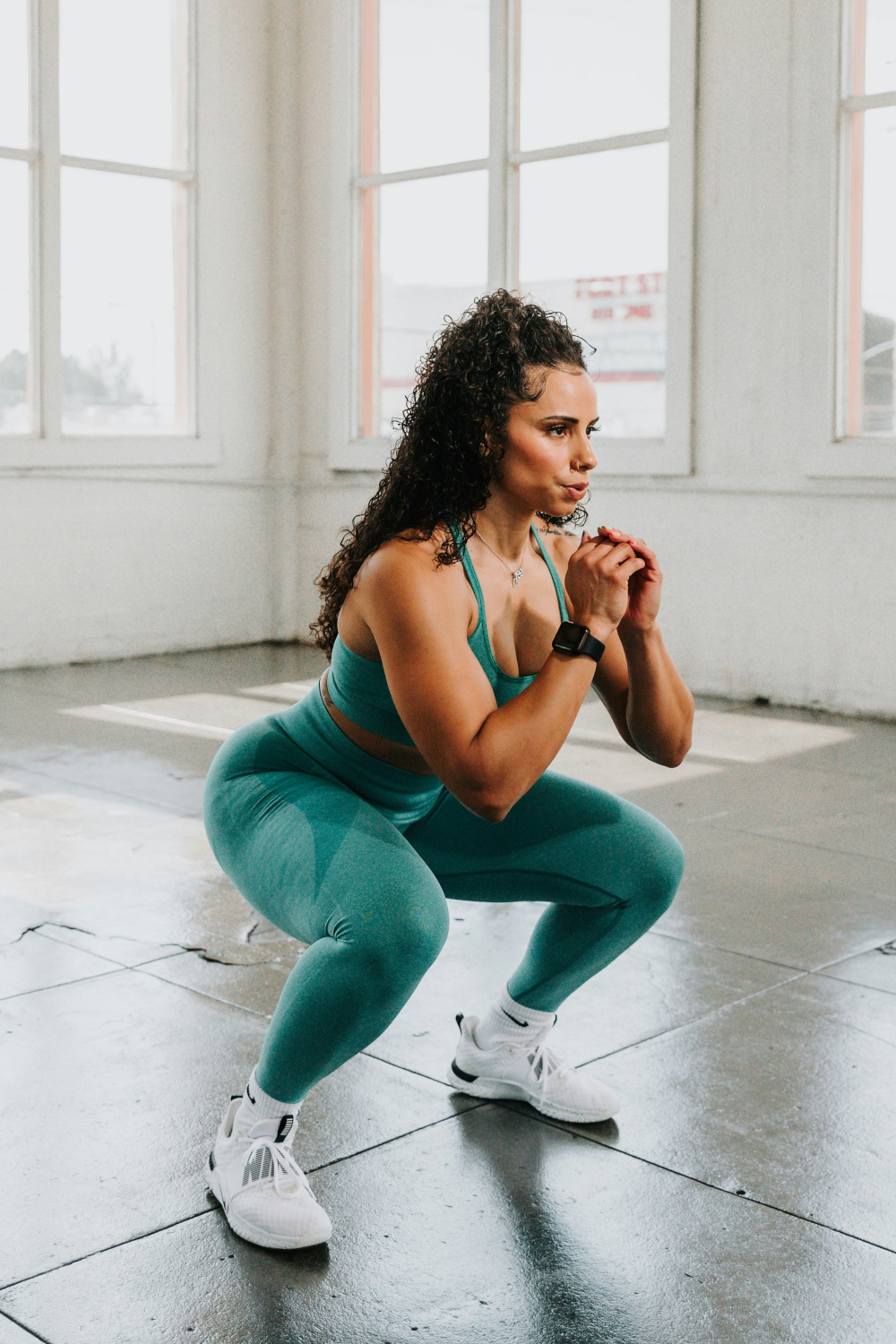
3 Easy Pelvic Floor Exercises You Can Do At Home
By
5 months ago
The fun doesn't stop at Kegels
The at-home fitness fad is booming – and the next workout trend on our radar? Pelvic floor exercises. Here’s how you can rock a routine from the comfort of your living room, without the need for a gym session.
What Are Pelvic Floor Exercises?
‘Pelvic floor exercises – often known as “Kegel exercises” – strengthen the muscles that sit at the base of the pelvis,’ explains Daniella Laxton, founder of Core Tonic. ‘These important muscles support the bladder, uterus and the bowel, and are essential for helping to stabilise the core.
‘With this in mind, pelvic floor exercises aim to strengthen the pelvic floor muscles, which have a multitude of benefits from improving bladder control to enhancing core strength and stability,’ she continues. ‘These exercises are also encouraged in pre and postnatal women to aid with childbirth recovery and regain strength in the pelvic floor.’
@nikizoub Our pelvic dloor is so precious, mamas! Make sure you’re engaging those muscles, a cue is to pretend you are trying to stop the flow of urine (do it gentle if you are a new mom) #pelvicfloor #postpartum #postpartumrecovery #newmom #core ♬ End of Beginning – Djo
What Are The Benefits
As mentioned, the biggest (and most talked about) benefits include an improved bladder and bowel control. But Daniella tells us there are many more advantages to keeping up with regular pelvic floor exercises. ‘There is so much more to a strong pelvic floor – from enhancing sexual function to stabilising the core and supporting the spine. The pelvic floor is also connected to the abdominals, forming the foundation of the “core.”‘
Can Men Do Pelvic Floor Exercises?
A big misconception is that these exercises are only for women. (Spoiler, they aren’t.) Many of the above benefits also apply to men, and can also help manage pain and swelling from prostatitis and benign prostatic hyperplasia (BPH).
How Long Does It Take To See These Benefits?
‘It is recommended that clients will start to feel the benefits from four to six weeks, but every body is different,’ Daniella emphasises. ‘It may take some people longer to feel improvements, particularly if there has been any trauma or stress to the pelvic floor. I recommend clients to try and perform their Kegel exercises at least once a day, and always incorporate them into my Pilates classes, whether that be via an exercise or during breathwork.’
Is There A Right Time To Start Pelvic Floor Exercises?
There isn’t really a right time to start pelvic floor exercises – but, as mentioned, you’ll notice the benefits the sooner you try. ‘It is highly recommended that pregnant women start to introduce them more frequently, however everyone can benefit from these exercises,’ adds Daniella. ‘They are also particularly important throughout later life to prevent the pelvic muscles from becoming weak.’
@onedariuswilliams Strengthen your pelvic floor with 9 stretches #pelvichealth #pelvicfloorexercises #pelvicfloor #hips #flexible #fullbodyworkout #pilates #pilatesworkout ♬ Fade – Alex Lustig
Pelvic Floor Exercises For Beginners
Kegels
The most popular pelvic floor exercise is Kegels; a simple squeeze and contract. ‘I often find that the best way to explain pelvic floor engagement to clients is by getting them to simply squeeze and contract – almost as if you are trying to hold in a wee! – and then relax the muscles,’ explains Daniella. ‘It helps to imagine that the pelvic floor is a lift or elevator. The lift at ground floor is at zero percent engagement, and at the top (let’s say the tenth floor) it’s at 100 percent engagement. This can be a helpful visualisation as you imagine “pulling up” the muscles, floor by floor.
- Find a comfortable space to sit or lie down.
- Identify your pelvic floor muscles (use Daniella’s guide above).
- Contract the muscles by squeezing and lifting, while avoiding tightening your abdomen, buttocks and thighs.
- Hold the “squeezing” sensation for five seconds, before releasing and relaxing for five.
- Repeat this 10 times.
Cat-Cow
‘The pelvic floor can also be strengthened by flowing movements,’ says Daniella. ‘For example, I love to incorporate a cat-cow into my sessions; this encourages pelvic floor engagement as clients transition between the “cat” and “cow” positions, connecting always to the breath.’
- Position yourself on your hands and knees, keeping your hands shoulder-width apart and your knees directly below your hips.
- Inhale deeply while curving your lower back and bringing your head up, tilting your pelvis up like a cow.
- Exhale deeply and bring your abdomen in, arching your spine and bringing your head and pelvis down like a cat.
- Repeat this 10 times.
Squats
If you want to work up a bit of a sweat, you can also work some pelvic floor exercises into your squat routine. Squats generally are great for working the muscles in the lower body, and can be tweaked slightly to encourage strength training with your pelvic floor.
- Stand with your feet shoulder width apart.
- As though you’re sitting in a chair, lower your body – making sure to keep your chest and back straight.
- As you lower and rise, engage your pelvic floor: relax as you go down and squeeze as you come back up.
- Repeat 10 times for one set, completing more sets as your strength improves.
@momdaystudio Try these 5 movements for pelvic floor strengthening. Remember to visualise lifting and contracting your pelvic floor with every exhale. #CapCut #GrandesDeclaracoesRenner #pregnantlife #pregnant #prenatalfitness #prenatal #32weekspregnant #34weekspregnant #33weekspregant #pregnanttiktok #postpartumrecovery #pregnancylife #thirdtrimester #firsttimemom #pregnancyjourney #pregnancyworkouts #29weekspregnant #30weekspregnant #35weekspregnant #36weekspregnant #pregnantmama ♬ All I Want Is You – Disco Lines
How To Get The Correct Form
And what should we keep in mind when doing these exercises? ‘It is really all about mind-body awareness; connecting the pelvic engagement to your breath, and knowing how to “switch on” the right muscles,’ highlights Daniella. ‘This comes with time and practice, but it’s something that everybody can do. Begin slowly, and reach out for help from a specialist (such as a Pilates instructor or physiotherapist) for assistance if you are unsure.’
Featured image: Sunday II Sunday, Unsplash






